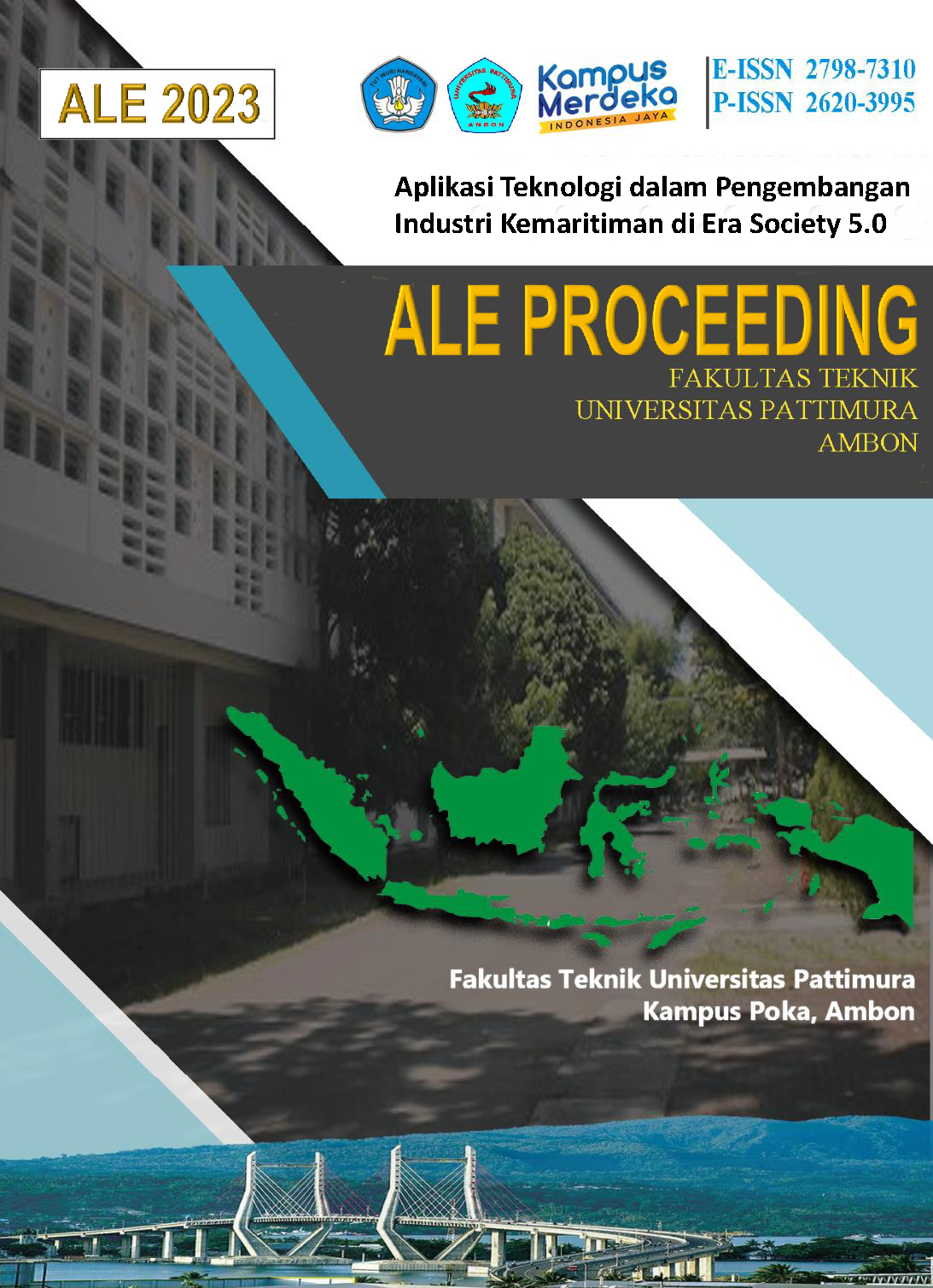PENGARUH MODIFIKASI KEMUDI PLAT MENJADI KEMUDI NACA 0010 PADA KM. HARAPAN MUJUR 04
Abstract
KM. Harapan Mujur 04 dalam pengoperasiannya memiliki tactical diameter yang sangat besar yang menimbulkan kesulitan olah gerak pada daerah yang padat transportasinya, sehingga pemilik ingin memodifikasi kemudi tersebut. Penelitian ini bertujuan untuk mendapatkan perbandingan kemampuan olah gerak kapal dengan berpatokan pada Turning Circle Test. Melalu uji coba di Towing tank Fakultas Teknik Universitas Pattimura dengan memvariasi bentuk kemudi plat dan kemudi NACA 0010. Hasil yamg diperoleh yaitu turning circle kemudi plat start kanan memperoleh nilai advance 198,99 m tactical diameter 181,08 m dan transfer 90,54 m untuk start kiri memperoleh nilai advance 198,99 m tactical diameter 181,08 m dan transfer 90,54 m. Sedangkan uji turning circle kemudi NACA 0010 memperoleh start kanan advance 151,33 m atau lebih efektif 31% dari kemudi plat, tactical diameter 107,15 m atau lebih efektif 60% dari kemudi plat dan transfer 45,08 m atau lebih efektif 50% dari kemudi plat. Sedangkan hasil uji dengan start kiri advance = 151,71 m atau lebih efektif 31%, dari kemudi plat tactical diameter = 107,36 m atau lebih efektif 60% dari kemudi plat dan transfer = 45.30 m atau lebih efektif 50% dari kemudi plat, sehingga demikian kemudi NACA 0010 lebih efisien dari kemudi plat.
Downloads
References
S. P. Maddula, V. Bhargava, C. P. Padhy, Md. A. Khan, (2020) “Computational analysis of NACA 0010 at moderate to high Reynolds number using 2D panel and Jukouwski methods” Patancheru, India Volume 4 Issue 5 – 2020 Department of Aerospace Engineering, GITAM University
A. Trimulyono, P Manik, W.M. Al Hakim (2013) ”Pengaruh Bentuk Profile Kemudi Terhadap Aliran Fluida Pada Kapal Ikan Tradisional Km. Surya Andalan Berbasis Cfd” KAPAL- Vol. 9, No.1 Februari 2013 Program Studi S1 Teknik Perkapalan Universitas Diponegoro
J. M. J. Jurnge and J. Pinkster. “Introduction in Ship Hydromechanics
Lewis 1988 Principles of Naval Architecture (Second Revision), Volume II - Resistance, Propulsion and Vibration. Society of Naval Architects and Marine Engineers SNAME
R.F. Hutapea, P. Manik, U. Budiarto (2017) “Analisa Pengaruh Penambahan Fin Pada Rudder Terhadap Kemampuan Manuvering Kapal Dengan Menggunakan Metode Computational Fluid Dynamic (Studi Kasus Kriso Container Ship)” Jurnal Teknik Perkapalan - Vol. 5, No. 1 Januari 2017 Departemen Teknik Perkapalan, Fakultas Teknik, Universitas Diponegoro.
A.N. Hasm, Alamsyah, M. Nuzhand (1, JUNI, 2021) “analisis perbandingan pengujian turning circle antara rudder konvensional dengan rudder jenis fishtail pada model kapal barge dengan metode open free running model test” JURNAL INOVTEK POLBENG, VOL. 11, NO. Program Studi Ilmu Aktuaria, Jurusan Matematika dan Teknologi Informasi Program Studi Teknik Kelautan, Jurusan Sains, Teknologi Pangan, dan Kemaritiman Institut Teknologi Kalimantan
G. E. Delftianto, (28 Desember 2015) “pengujian gerak turning circle pada kapal cepat twin screw ekor ikan menggunakan teknik open free running test” Tesis Jurusan Teknik Perkapalan Fakultas Teknologi Kelautan Institut Teknologi Sepuluh Nopember Surabaya.
R. Hariseputra, A. Sulisetyono (2019) “Metode yang dikembangkan ini kemudian digunakan untuk menguji performa tiga jenis kemudi” TESIS Jurusan Teknik Perkapalan Staff Pengajar Jurusan Teknik Perkapalan Fakultas Teknologi Kelautan Institut Teknologi Sepuluh Nopember SURABAYA
Copyright (c) 2023 La Ode Ruju, Eliza R. de Fretes, G. R. Latuhihin

This work is licensed under a Creative Commons Attribution-ShareAlike 4.0 International License.
An author who publishes in the ALE Proceeding agrees to the following terms:
- Author retains the copyright and grants ALE Proceeding the right of first publication of the work simultaneously licensed under the Creative Commons Attribution-ShareAlike 4.0 License that allows others to share the work with an acknowledgment of the work's authorship and initial publication in this journal.
- Author is able to enter into separate, additional contractual arrangements for the non-exclusive distribution of the journal's published version of the work (e.g., post it to an institutional repository or publish it in a book) with the acknowledgment of its initial publication in this journal.
- Author is permitted and encouraged to post his/her work online (e.g., in institutional repositories or on their website) prior to and during the submission process, as it can lead to productive exchanges, as well as earlier and greater citation of the published work (See The Effect of Open Access).
Read more about the Creative Commons Attribution-ShareAlike 4.0 Licence here: https://creativecommons.org/licenses/by-sa/4.0/.






